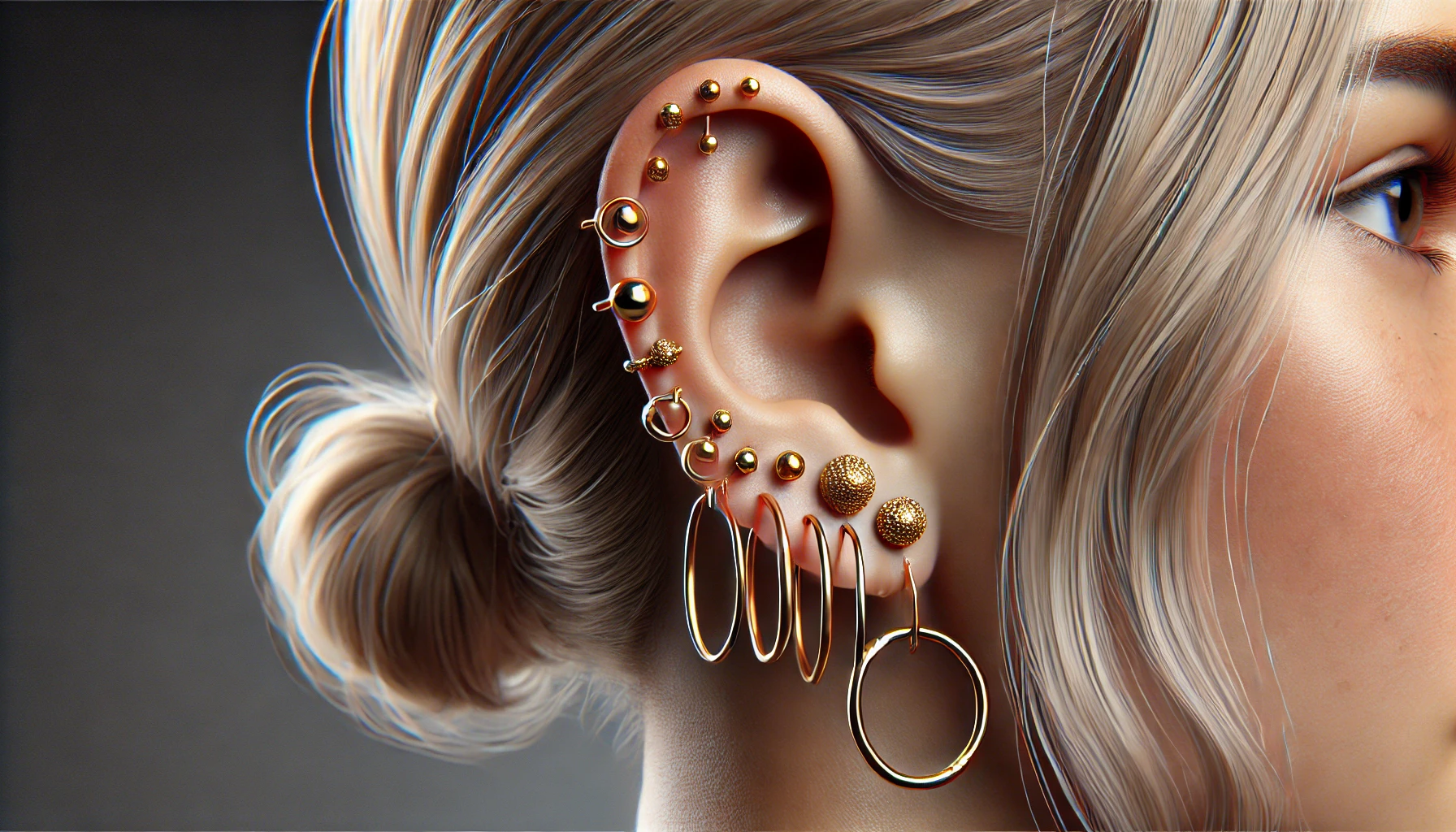This post was written with Consensus AI Academic Search Engine – please read our Disclaimer at the end of this article. Cartilage piercings can be a beautiful and unique form of self-expression, but they require careful consideration and diligent aftercare. Understanding the procedure, potential risks, and proper aftercare can help ensure a successful and complication-free healing process. Always consult with a professional piercer and seek medical advice if you experience any signs of infection or other complications.
Cartilage piercings have become increasingly popular in recent years, offering a unique and stylish way to express individuality. However, they come with their own set of considerations and potential complications. This article will cover the basics of cartilage piercings, including the procedure, healing process, potential risks, and aftercare.
The Procedure
Cartilage piercings are typically performed by a professional piercer using a sterilized needle. Unlike earlobe piercings, which are often done with a piercing gun, cartilage piercings require a more precise approach due to the tougher nature of the cartilage tissue. The piercer will mark the desired location, clean the area, and then use a needle to create the hole. Jewelry is then inserted into the new piercing.
Healing Process
The healing process for cartilage piercings is generally longer and more complex than for earlobe piercings. Cartilage has a limited blood supply, which can slow down the healing process. On average, it can take anywhere from 3 to 12 months for a cartilage piercing to fully heal. During this time, it is crucial to follow proper aftercare procedures to avoid complications.
Potential Risks
Infection
One of the most common risks associated with cartilage piercings is infection. Due to the limited blood flow in cartilage, infections can be more difficult to treat and may lead to more severe complications. Symptoms of an infection include redness, swelling, pain, and discharge. In severe cases, an untreated infection can lead to cartilage damage or even necrosis.
Keloids and Hypertrophic Scarring
Some individuals may develop keloids or hypertrophic scars as a result of cartilage piercings. Keloids are raised, thickened areas of scar tissue that extend beyond the original wound, while hypertrophic scars are raised but confined to the area of the piercing. Both conditions can be unsightly and may require medical treatment to manage.
Cartilage Damage
Improper piercing techniques or trauma to the piercing site can result in cartilage damage. This can lead to deformities or chronic pain. It is essential to choose a reputable and experienced piercer to minimize the risk of cartilage damage.
Aftercare
Proper aftercare is crucial for the successful healing of a cartilage piercing. Here are some general guidelines:
- Cleaning: Clean the piercing twice daily with a saline solution or a piercing aftercare spray. Avoid using alcohol or hydrogen peroxide, as these can be too harsh and delay healing.
- Avoid Touching: Refrain from touching the piercing with unwashed hands to prevent introducing bacteria to the site.
- Jewelry: Do not change the jewelry until the piercing is fully healed. Opt for high-quality, hypoallergenic materials such as surgical steel, titanium, or gold.
- Sleeping: Avoid sleeping on the side of the new piercing to prevent irritation and pressure on the site.
- Swimming: Avoid swimming in pools, hot tubs, or natural bodies of water until the piercing is fully healed to reduce the risk of infection.
Disclaimer
The content presented in this blog is generated by Consensus, an AI-powered academic search engine, and is based on publicly available scientific literature. While every effort is made to provide accurate, up-to-date, and well-researched information, the content is intended for informational and educational purposes only. It does not constitute medical advice, diagnosis, or treatment. Always consult a qualified healthcare professional before making any decisions regarding medical conditions, treatments, or medications. The AI system’s analysis may not cover all perspectives, emerging research, or individual cases, and it is not a substitute for professional expertise. Neither the blog publisher nor the developers of the AI-powered search engine are responsible for any actions taken based on the information provided in this content. Use of this information is at your own risk. Citations to the original scientific studies are included for reference, but these studies should be reviewed in full and interpreted with the guidance of a healthcare or research professional.
If you are experiencing a medical emergency, please seek immediate attention from a healthcare provider.
